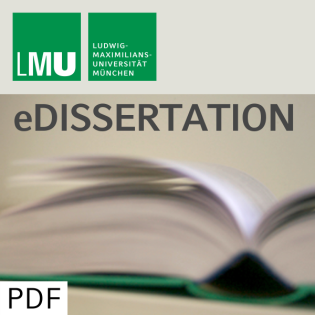
Matrix product state clculations for one-dimensional quantum chains and quantum impurity models
Beschreibung
vor 13 Jahren
This thesis contributes to the field of strongly correlated
electron systems with studies in two distinct fields thereof: the
specific nature of correlations between electrons in one dimension
and quantum quenches in quantum impurity problems. In general,
strongly correlated systems are characterized in that their
physical behaviour needs to be described in terms of a many-body
description, i.e. interactions correlate all particles in a complex
way. The challenge is that the Hilbert space in a many-body theory
is exponentially large in the number of particles. Thus, when no
analytic solution is available - which is typically the case - it
is necessary to find a way to somehow circumvent the problem of
such huge Hilbert spaces. Therefore, the connection between the two
studies comes from our numerical treatment: they are tackled by the
density matrix renormalization group (DMRG) [1] and the numerical
renormalization group (NRG) [2], respectively, both based on matrix
product states. The first project presented in this thesis
addresses the problem of numerically finding the dominant
correlations in quantum lattice models in an unbiased way, i.e.
without using prior knowledge of the model at hand. A useful
concept for this task is the correlation density matrix (CDM) [3]
which contains all correlations between two clusters of lattice
sites. We show how to extract from the CDM, a survey of the
relative strengths of the system’s correlations in different
symmetry sectors as well as detailed information on the operators
carrying long-range correlations and the spatial dependence of
their correlation functions. We demonstrate this by a DMRG study of
a one-dimensional spinless extended Hubbard model [4], while
emphasizing that the proposed analysis of the CDM is not restricted
to one dimension. The second project presented in this thesis is
motivated by two phenomena under ongoing experimental and
theoretical investigation in the context of quantum impurity
models: optical absorption involving a Kondo exciton [5, 6, 7] and
population switching in quantum dots [8, 9, 10, 11, 12, 13, 14,
15]. It turns out that both phenomena rely on the various
manifestations of Anderson orthogonality (AO) [16], which describes
the fact that the response of the Fermi sea to a quantum quench
(i.e. an abrupt change of some property of the impurity or quantum
dot) is a change of the scattering phase shifts of all the
single-particle wave functions, therefore drastically changing the
system. In this context, we demonstrate that NRG, a highly accurate
method for quantum impurity models, allows for the calculation of
all static and dynamic quantities related to AO and present an
extensive NRG study for population switching in quantum dots.
electron systems with studies in two distinct fields thereof: the
specific nature of correlations between electrons in one dimension
and quantum quenches in quantum impurity problems. In general,
strongly correlated systems are characterized in that their
physical behaviour needs to be described in terms of a many-body
description, i.e. interactions correlate all particles in a complex
way. The challenge is that the Hilbert space in a many-body theory
is exponentially large in the number of particles. Thus, when no
analytic solution is available - which is typically the case - it
is necessary to find a way to somehow circumvent the problem of
such huge Hilbert spaces. Therefore, the connection between the two
studies comes from our numerical treatment: they are tackled by the
density matrix renormalization group (DMRG) [1] and the numerical
renormalization group (NRG) [2], respectively, both based on matrix
product states. The first project presented in this thesis
addresses the problem of numerically finding the dominant
correlations in quantum lattice models in an unbiased way, i.e.
without using prior knowledge of the model at hand. A useful
concept for this task is the correlation density matrix (CDM) [3]
which contains all correlations between two clusters of lattice
sites. We show how to extract from the CDM, a survey of the
relative strengths of the system’s correlations in different
symmetry sectors as well as detailed information on the operators
carrying long-range correlations and the spatial dependence of
their correlation functions. We demonstrate this by a DMRG study of
a one-dimensional spinless extended Hubbard model [4], while
emphasizing that the proposed analysis of the CDM is not restricted
to one dimension. The second project presented in this thesis is
motivated by two phenomena under ongoing experimental and
theoretical investigation in the context of quantum impurity
models: optical absorption involving a Kondo exciton [5, 6, 7] and
population switching in quantum dots [8, 9, 10, 11, 12, 13, 14,
15]. It turns out that both phenomena rely on the various
manifestations of Anderson orthogonality (AO) [16], which describes
the fact that the response of the Fermi sea to a quantum quench
(i.e. an abrupt change of some property of the impurity or quantum
dot) is a change of the scattering phase shifts of all the
single-particle wave functions, therefore drastically changing the
system. In this context, we demonstrate that NRG, a highly accurate
method for quantum impurity models, allows for the calculation of
all static and dynamic quantities related to AO and present an
extensive NRG study for population switching in quantum dots.
Weitere Episoden


vor 10 Jahren

vor 10 Jahren
In Podcasts werben






Kommentare (0)